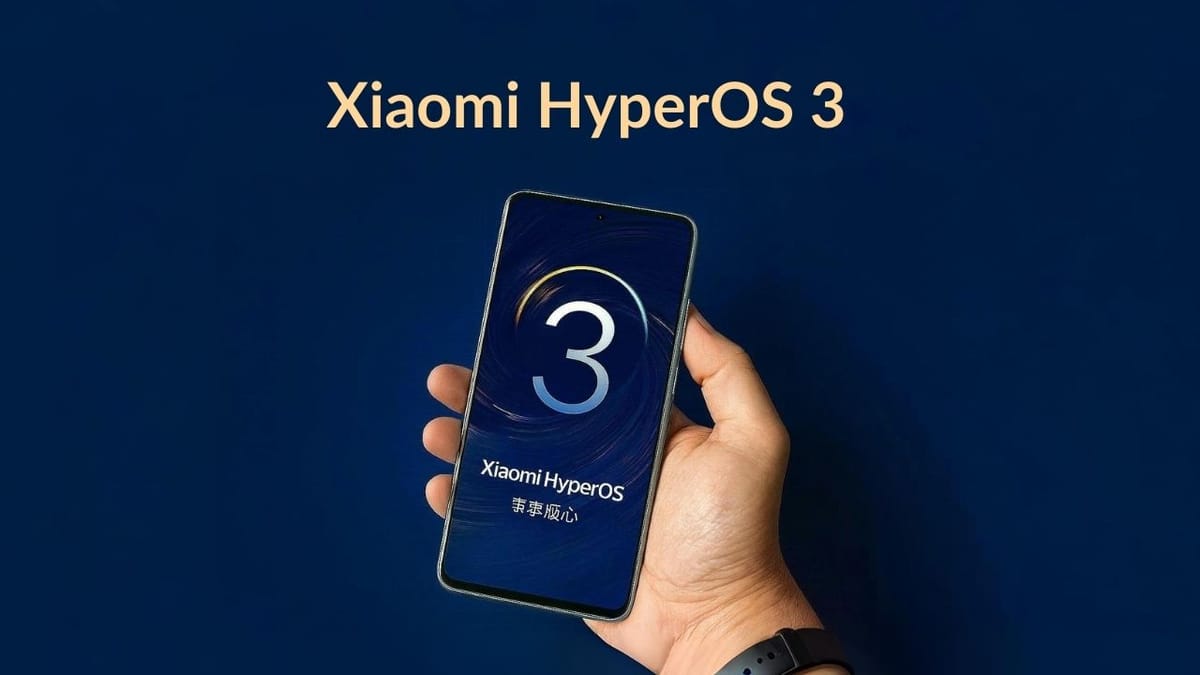Xiaomi Starts Stable HyperOS 3 Rollout: Here Are the First Six Phones Getting It
Xiaomi starts rolling out the stable HyperOS 3 update with these devices. Check if it's available for your smartphone.

The wait is finally over — Xiaomi has started rolling out the stable HyperOS 3 update, the company’s biggest software refresh yet, built on Android 16. The update introduces a host of visual and AI-powered upgrades, led by the all-new Xiaomi Super Island, deeper cross-device connectivity, and smarter customization options designed to make HyperOS feel more fluid, personal, and intelligent.
The rollout has officially begun in China, covering the first batch of flagship devices: the Xiaomi 15 Ultra, 15S Pro, 15 Pro, 15, Redmi K80 Pro, and Redmi K80 Extreme Edition. Global users won’t have to wait long either — the worldwide rollout is expected to start later this month, according to Xiaomi’s official timeline.
Owners in China can already check for the update by heading to Settings > About phone > HyperOS logo > Check for updates. The company also confirmed that the Xiaomi 15 series will receive the update across different regions between October and November 2025, with mid-range and older devices to follow soon after.
So, what’s new in HyperOS 3? The headline feature is Xiaomi Super Island, a dynamic multitasking layer that places live activities and notifications right at the top of the screen — think Apple’s Dynamic Island, but evolved. Xiaomi’s version supports up to three “islands” and floating windows, letting users manage multiple apps or live updates at once. It’s one of the most visual and functional changes to the interface so far.
Visually, HyperOS 3 brings new icons, bolder colors, and smoother animations, giving the system a cleaner, more modern aesthetic. Xiaomi also revamped the lock screen experience with AI Cinematic Lock Screen and AI Dynamic Wallpapers, which use generative visuals to make each unlock feel immersive. A centralized lock screen editor makes customization more accessible for casual users.
Beyond the looks, HyperOS 3 is deeply integrated with Xiaomi’s HyperAI — a new layer of system-wide intelligence that powers everything from creative writing tools to productivity features. Users can now generate captions, summarize notes, or write in different styles using DeepThink mode. Meanwhile, AI Speech Recognition automatically transcribes audio, filters out background noise, and generates quick summaries — a game-changer for journalists, students, and creators who record on the go.
Xiaomi is also closing the ecosystem gap with cross-device integration, even with Apple hardware. HyperOS 3 lets users run Xiaomi apps on iPads, mirror Xiaomi phones on Macs in desktop-style windows, and even unlock a Xiaomi phone using Face ID or Touch ID. The iPhone can also locate a Xiaomi device by linking through a Xiaomi hotspot — a clever nod toward interoperability in an era dominated by walled ecosystems.
Under the hood, Xiaomi promises improved efficiency and performance, with smoother transitions and better power optimization. Early testers in China report faster app launches and longer standby times — small but meaningful gains for day-to-day use.
With HyperOS 3, Xiaomi isn’t just catching up to Android’s biggest players — it’s carving out a distinct identity that blends Apple-like polish with the openness of Android. As it rolls out globally, this update could redefine what a modern Xiaomi experience feels like: fluid, adaptive, and quietly futuristic.




